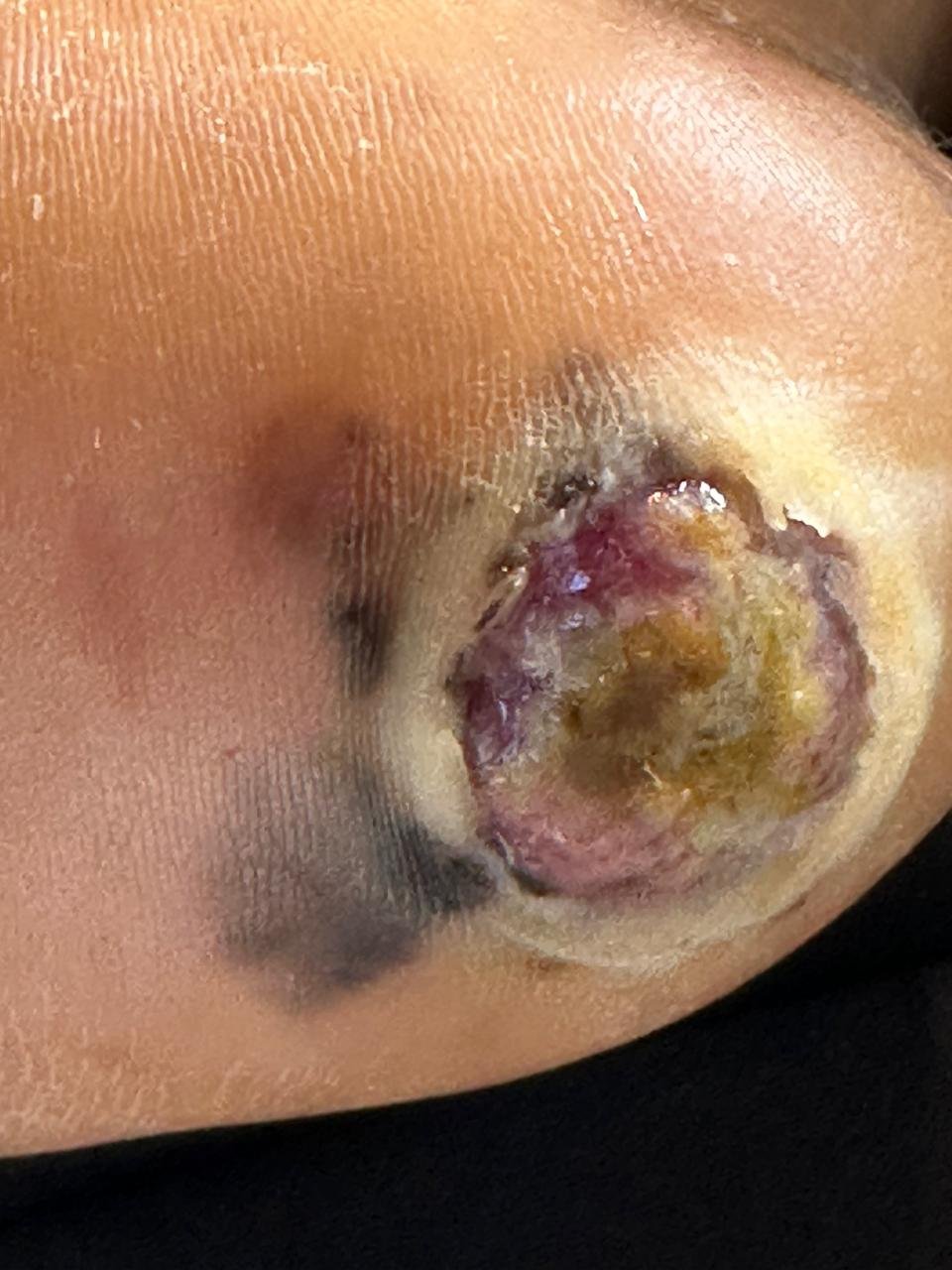BENEATH THE SURFACE
Janine Mendes-Franco
The scary truth about melanoma in hair and nails
WARNING: This post contains an image of advanced melanoma, which may be disturbing to sensitive readers. It is shared here with our patient’s kind permission, in order to help raise awareness.
Melanoma is not the most common of skin cancers, but it tends to be an aggressive type that can spread to other parts of the body not caught early. They’re very surreptitious, lurking in places you’d never think about — moles you may have on your body, under your hair or nails, or even on the soles of your feet.
This form of skin cancer develops in the melanocytes, the cells responsible for producing melanin, the pigment that gives skin its colour. While the perception is that skin cancer on the whole is associated with sun-exposure, the reality is that melanomas in particular can develop in places that the sun barely touches, making them potentially more dangerous as they’re often detected late.
Melanoma image used with patient’s permission
One patient actually had the condition misdiagnosed by a general practitioner, who deemed the dark spot on the sole of her foot a wart, and treated it as such. so if you have concerns about anything on your skin, it’s really best to come straight to a dermatologist — this increases the likelihood of early intervention and treatment.
Scalp melanomas occur on the head, often hidden beneath the hair and therefore more difficult to spot. People with fair skin and light hair tend to be more at risk, especially if they have had a history of sunburn. They are also more common in older adults and usually take the form of:
• An unusual mole or spot on the scalp that may be irregular in shape or colour
• A patch of skin that feels tender or itchy
• A sore that doesn’t heal or continues to bleed
We therefore recommend regular checks and professional scalp exams, especially if you fall into the higher risk category.
Subungual melanomas affect the nail bed and can show up under the nails of both fingers and toes. Such cancers are rare, but can be aggressive. People who are 50+, as well as those with darker skin tones, may be at higher risk for this type of cancer. Previous trauma to the nail can increase the risk. Patients usually notice:
• Dark streaks — usually brown or black — under the nail that do not grow out
• A new spot or band of pigment on or around the nail
• Brittle nails start separating from the nail bed
• Pain, tenderness, or swelling in the affected area
Because these melanomas present in much the same way that final infections or damaged nails might, they often go unnoticed until the disease has progressed. Remember: Any unexplained changes to your nails should be examined by a dermatologist.
Acral lentiginous melanoma (ALMs) is a rare subtype of melanomas. They tend to show up on the palms of the hands, soles of the feet, and under the nails. Though darker skin types are at higher risk, it is important for everyone to be vigilant. Most cases appear without any direct cause, but injuries to the sole of the foot may aid in predisposition. Symptoms include:
• A dark, irregularly shaped patch or lesion on the sole of the foot
• A sore that bleeds and doesn’t heal
• Itching or pain in the affected area
• Discolouration (brown, black, or even colourless)
Because most people do not expect skin cancers to occur in parts of the body that are not exposed to sunlight, this type of melanoma can often be mistaken for blisters or warts — but they grow deep into tissue and can spread quickly.
Protect yourself
Melanomas often behave like the bogey-man of skin cancers, but there are ways to protect yourself:
• Be vigilant — Conduct regular self-examinations, and check your scalp, nails, and soles regularly for any new or changing spots, lesions, or discolouration.
• Go pro — Dermatologists can examine hard-to-see areas and provide expert evaluations of any suspicious changes.
• Screen from the sun — While melanoma in these areas is not always linked to UV exposure, protecting your skin from the sun is essential in reducing your risk.
• Play it safe — If you notice persistent changes in your nails, scalp, or feet that don’t improve, come in and see us as soon as possible, as early detection greatly improves outcomes.
Remember, regular skin checks by both you and your dermatologist are key to maintaining your skin health.





